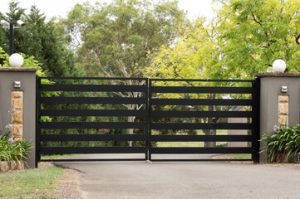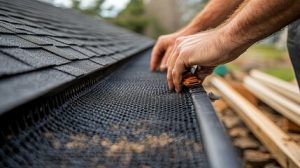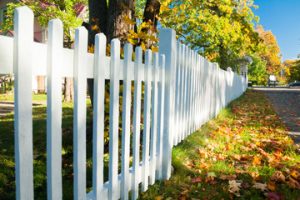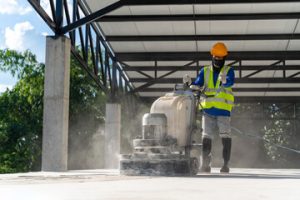A home loan or mortgage is a secured loan that uses real estate as collateral. Borrowers pay a monthly payment comprised of principal and interest over the loan term.

Choosing Sparrow Home Loans support long-term financial goals and contributes to overall financial stability. It is important to understand the key distinctions between home loans and mortgages.
Home equity is a key asset that many homeowners have, and it can be used to help pay for one-time expenses, consolidate debt or fund a major purchase. If you have significant equity in your home and are looking for a lump sum that you can repay over the life of the loan – with a fixed interest rate – a Home Equity Loan may be the right solution for you.
A home equity loan, also known as a second mortgage, allows you to borrow up to the difference in your property’s current value and the balance of your existing mortgage. A lender will review your income, credit history and debt-to-income ratio to determine the maximum amount you can borrow. A lender will also look at the “loan-to-value” (LTV) ratio, which compares how much you owe on your mortgage to your property’s current value.
Unlike the first mortgage, which is generally a 30-year fixed-rate loan with a set monthly payment that remains the same for the entire term of your loan, home equity loans are typically disbursed in one lump sum and have a variable or fixed interest rate, depending on the type of loan you choose. The amount you can borrow is usually capped at a percentage of your home’s current value, with most lenders seeking an LTV no higher than 80%.
A Home Equity Line of Credit is a revolving credit line that uses your equity as collateral. It is similar to a credit card, where you can withdraw funds up to your approved limit and only pay interest on the amount you use. This type of financing is often easier to qualify for because you’re borrowing against your own home equity and aren’t putting yourself at financial risk like you would with a new debt obligation. We offer both a HELOC and a Home Equity Loan, and our rates are competitive compared to other local lenders. Plus, you’ll always have the added benefit of knowing your home equity stays with Capitol Federal®!1
Fixed Interest Rates
A fixed interest rate on a home loan or mortgage means that your monthly principal and interest payments will remain the same for the duration of your mortgage. However, if homeowners’ insurance or property taxes are included in your monthly payment, those could increase as a result of changes in coverage or municipal tax rates. On the other hand, variable interest rates are subject to change based on market conditions, and your monthly payments may increase or decrease as a result.
Choosing between fixed and variable interest rates comes down to your personal financial situation and how much risk you’re comfortable taking. If you’re a stability seeker or have a tight budget that wouldn’t be able to accommodate increased monthly payments, then a fixed-rate home loan may be right for you. But if you’re a risk-taker and keep an eye on market trends, or expect that interest rates will fall in the near future, then a variable-rate loan may be a better option for your home financing needs.
Fixed interest rates also come with some financial advantages, like predictable payments for a set period of time, which can help you create a more stable budget and reduce your overall stress. However, at the outset, fixed interest rates tend to be higher than their variable-rate counterparts because lenders take on a little more risk by locking into a fixed rate, and they don’t receive any benefit from falling market rates.
Conventional mortgages are generally the most common type of home loan available, and they must meet standards that allow lenders to sell them to government-sponsored enterprises such as Fannie Mae and Freddie Mac. This can help ensure a consistent supply of loans for buyers, but it can also lead to stiff requirements for applicants. Meanwhile, government-insured loans, such as FHA and VA loans, offer more flexible qualifications for borrowers.
Another option is a jumbo loan, which offers more flexibility in terms of loan amounts and repayment options, and can be used to finance homes that exceed the conforming loan limits set by Fannie Mae and Freddie Mac. However, these loans usually have higher interest rates than conventional mortgages, and may require stricter credit standards than other types of financing.
Flexible Funding Options
Owning a home brings many responsibilities along with the privilege of making it your own. From unexpected repairs to dream-worthy renovations, homeownership can come with a variety of expenses that may challenge your budget. To help fund these costs, consider flexible financing options like a personal loan or home equity line of credit (HELOC). These are secured loans based on the market value of your property and can provide you with the flexibility you need to meet various spending needs.
A personal loan offers more flexible borrowing limits than HELOCs and typically requires a shorter application process. This can be a smart choice for homeowners who want to take advantage of low interest rates or those with a pressing need for funds. Like any debt, it’s important to ensure the amount borrowed aligns with your financial goals and fits comfortably within your monthly budget.
With a HELOC, you can get a lump sum based on your current equity and borrow as needed during the draw period. The amount you can borrow is determined by the lender and depends on your available equity and your credit profile. This option is best for ongoing projects or expenses where the cost isn’t known up front, providing you with a versatile funding solution that can fit your unique needs.
Private home financing is a powerful alternative to traditional mortgage options and can be used to purchase single-family homes, condos, planned unit developments, or multifamily 2-4 unit dwellings. These flexible mortgage solutions enable you to grow your real estate portfolio or unlock equity for other opportunities. With a range of mortgage options, including asset-based loans, bank statement loans, and DSCR loans, private lending solutions can help you secure a loan that fits your specific situation.
Bridge loans are short-term financing solutions designed to “bridge” gaps in financing during a transitional period. They can be used to buy a new home before the current one sells, fund fixer-uppers for investment purposes, or finance business purchases when time is of the essence. These short-term lending solutions are typically more expensive than other home financing options, but can provide you with the liquidity you need to manage various financial obligations.
Easy Application Process
The home loan application process can be lengthy, but it is also a necessary part of buying a new home. Most people are unable to pay cash for homes, so financing is the most common path to homeownership. As such, the home loan application process requires a significant amount of paperwork and financial information.
The first step in preparing for the mortgage loan application is to evaluate your finances and credit score. This is important to determine what size loan you qualify for and the terms of your mortgage, which can affect your monthly payments. Additionally, evaluating your credit can help you identify potential issues that may delay or derail your mortgage approval process.
Once you are ready to apply, your lender will request a full home loan application and supporting documentation. This can include your social security number, address to your home, employment history and salary, personal tax returns, W-2 forms, bank account statements and asset valuations. Additionally, lenders will assess your debt to income ratio to determine your overall ability to repay the loan. In some cases, you will need to provide additional documents, such as your alimony and child support payments, or proof of rental history.
Following pre-approval, you will be able to narrow your home search to properties that meet your budget requirements. Your lender will also check the property you are considering to ensure it meets all lending guidelines, including a clean title and homeowners insurance.
If you have a prequalification letter from a lender, be sure to bring this with you when you visit property locations. It can help speed up the approval process when you can present it to your real estate agent. Once you have found the right home, submit your purchase agreement and Intent to Proceed to your loan officer online or via the document portal in HomeSquad. This will convert your preapproval to a loan estimate within three business days.








